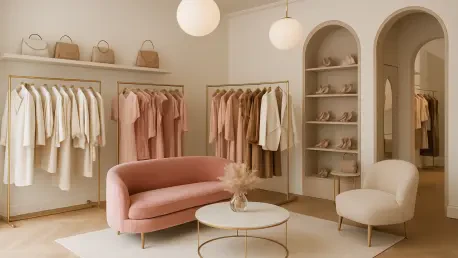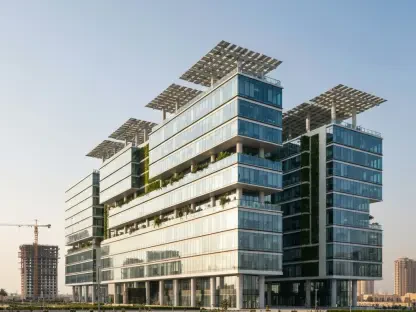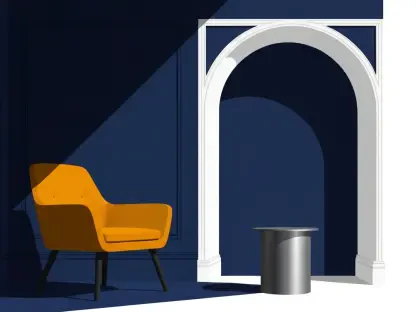During New York Fashion Week, a remarkable shift has emerged in the retail landscape, where boutiques are no longer just places to shop but have become immersive environments that inspire home design. These spaces blend fashion and interior aesthetics, turning a simple purchase into a lifestyle experience. Visitors are invited to envision how clothing, accessories, and decor can harmonize within their own living spaces, thanks to innovative store layouts that mimic residential settings. This trend, spotlighted by several newly opened stores in New York City, reveals how brands are leveraging design to create emotional connections with customers. Far from being mere commercial hubs, these boutiques craft narratives through their interiors, reflecting personal style and domestic comfort. As the lines between retail and home blur, the shopping experience transforms into a source of inspiration, encouraging consumers to rethink how their surroundings can embody the same elegance or charm found in these curated spaces.
Transforming Shopping into Domestic Dreams
The concept of retail as a reflection of home life takes center stage at Tuckernuck’s new Madison Avenue location, where the design mirrors a sophisticated Manhattan apartment. Crafted through a collaboration between CeCe Barfield Thompson and architect Wendy Burns, the store is segmented into distinct zones like a foyer, family room, and boudoir. Each area serves a specific purpose—shoes and handbags occupy the family room, while cashmere and denim are showcased near dressing areas in the boudoir. A unifying jewel-toned palette ties these spaces together, creating a seamless residential vibe. This intentional layout does more than display products; it invites patrons to imagine these items within their own homes, fostering a deeper connection to the brand. The result is an environment where shopping feels like stepping into a friend’s elegantly curated space, redefining how retail can influence personal aesthetics beyond the store’s walls and into everyday living.
Another dimension of this trend is evident in how these spaces prioritize customer experience over mere transactions at Tuckernuck. Beyond the apartment-like structure, the store incorporates thoughtful touches like a gifting suite in a scullery area, enhancing the sense of discovery. The design encourages lingering, as visitors explore each room with a curiosity akin to touring a beautifully appointed home. This approach shifts the focus from quick purchases to meaningful engagement, where the act of shopping becomes a journey through a lifestyle narrative. By presenting products in settings that resonate with domestic ideals, the boutique taps into an aspirational mindset, prompting customers to consider how such elegance could translate into their own surroundings. This strategy not only elevates the brand’s identity but also positions retail spaces as catalysts for home inspiration, bridging the gap between fashion and interior design with remarkable finesse.
Crafting Temporary Elegance with Lasting Impact
Métier, a London-based luxury leather goods brand, introduces a transient yet striking design with its temporary Soho boutique, marking a bold residency during Fashion Week. Designed in collaboration with Akari Endo-Gaut and Currie Ritchie, the space features espresso-stained wood walls paired with banquette seating upholstered in the brand’s signature jacquard print. Curated furniture, artworks, and custom floral installations add layers of sophistication, reflecting a gallery-like ambiance. This meticulous attention to detail underscores a commitment to craftsmanship, aligning with the brand’s ethos of elegance. Even as a short-term setup, the boutique leaves a lasting impression, demonstrating how temporary spaces can still inspire long-term design ideas. Customers are drawn into an environment that feels both exclusive and intimate, prompting thoughts of how such refined aesthetics might enhance their personal spaces beyond the fleeting visit.
The impact of Métier’s design lies in its ability to balance temporality with timeless inspiration, creating a narrative that transcends the boutique’s limited duration. The integration of art and bespoke elements transforms the store into a showcase of curated living, where every corner tells a story of intentionality. This approach resonates with those seeking to infuse their homes with a similar sense of purpose and style, proving that even a temporary retail space can influence enduring design choices. The layered aesthetic not only highlights the products but also positions the brand as a thought leader in blending fashion with interior concepts. By offering a glimpse into a world of cultivated elegance, Métier challenges conventional retail norms, encouraging visitors to reimagine their domestic environments with the same level of care and creativity that defines this unique Soho residency.
Blending Casual Charm with Lifestyle Retail
William White’s newly established Emporium on Canal Street offers a fresh perspective on retail by embracing a lived-in, approachable atmosphere during its Fashion Week debut. Dubbed “Will’s Place” by creative director Will Cooper, the space is thoughtfully divided into a café and library at the front, a homewares boutique in the middle, and a clothing section at the rear. Items like woven baskets and everyday essentials are displayed alongside antique furniture and signature corduroy chairs, creating a cozy, eclectic vibe. This setup blurs the boundaries between shopping and socializing, making the experience feel like dropping by a friend’s home. Such an environment fosters a sense of familiarity, allowing customers to connect with the brand on a personal level while envisioning how these products could seamlessly fit into their daily lives with a touch of effortless style.
Further exploring this casual intimacy, the Emporium stands out by prioritizing emotional resonance through its design choices, setting a new standard for lifestyle retail. The intentional use of familiar textures and nostalgic elements evokes a sense of comfort rarely found in traditional stores. Visitors are not just browsing; they are immersed in a space that mirrors the warmth of a personal sanctuary, prompting ideas for their own home decor. This unique blend of retail and residential charm highlights how brands can use interior design to build deeper connections with their audience. By presenting fashion and homewares in such an accessible manner, William White redefines the shopping experience as an invitation to curate one’s life with the same ease and personality reflected in the store’s inviting layout, pushing the boundaries of how retail spaces can inspire beyond their immediate purpose.
Reflecting on a New Retail Narrative
Looking back, New York Fashion Week provided a remarkable stage for boutiques like Tuckernuck, Métier, and William White to unveil spaces that went beyond traditional retail, weaving home inspiration into their very fabric. Each store, with its distinct approach—be it structured elegance, transient sophistication, or cozy familiarity—contributed to a broader narrative of design-driven commerce. These environments demonstrated that shopping could be an immersive journey, one that mirrored the comfort and style of domestic life. The fusion of fashion and interior aesthetics in these spaces marked a pivotal moment, showing how brands could tell compelling stories through their surroundings. Moving forward, the challenge lies in sustaining this momentum, ensuring that future retail designs continue to prioritize experiential elements. Exploring scalable ways to integrate such personalized atmospheres into more locations could further transform how consumers perceive and interact with both fashion and their living spaces.









